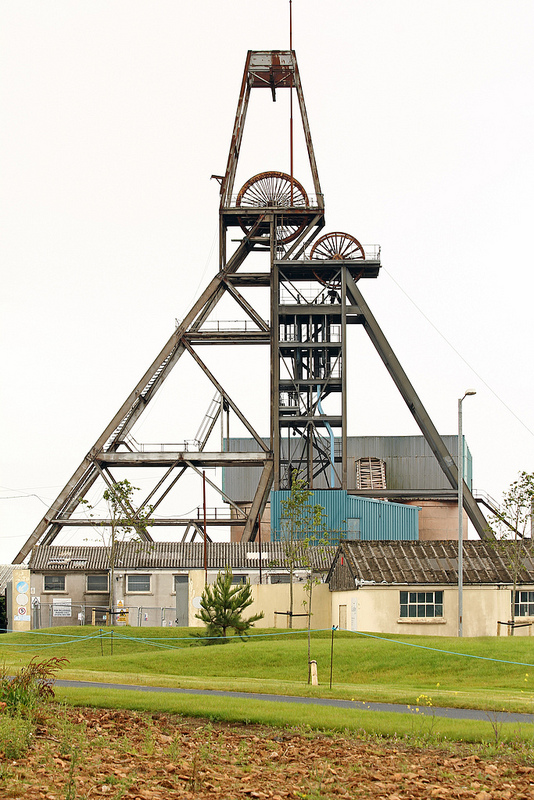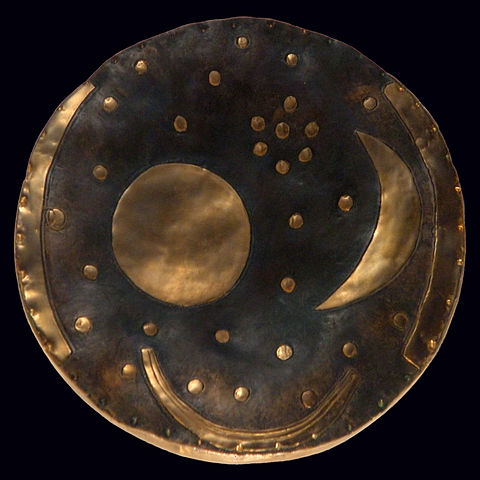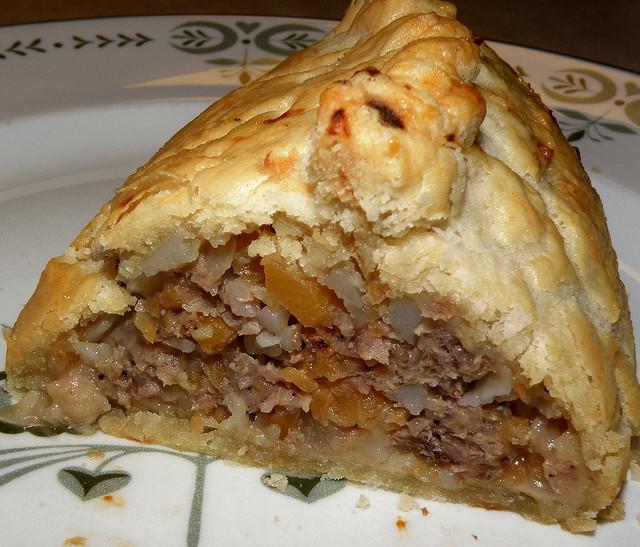The county of Cornwall is like England’s foot, stretching out languorously into the warm waters of the Gulf Stream1. Now a relatively poor area, best known for fishing and tourism, it has a proud industrial past based on mining, notably of tin. Once the most important thing about Britain, Cornish tin is now distributed across the world. The up and downs of mining also scattered Cornish miners globally. If you look in the right places in the right ways, traces of both can still be found.
If you took a chunk of rock and analysed it, atom by atom, you’d find most elements inside it somewhere. In order to have a rock that is an ore, of interest to miners, it must contain enough of what you want so that it can be extracted commercially. Therefore the formation of ore deposits is often associated with processes that take specific elements from large volumes of rock and put them into much smaller volumes. Granites, which are common in Cornwall, are good at doing this. As granite intrusions cool, water that was within the magma, or from the surrounding rocks, is heated and flows widely. Hot water is good at dissolving and transporting certain elements. At some point this hot water cools and the elements dissolved within it are precipitated out, often into fractures called veins. In places around the Cornish granites there are veins rich in cassiterite – tin oxide.

South Crofty Tin mine in Cornwall. Photo from exnottsminer under CC
Cornwall’s tin travels far
The Bronze Age (in Europe 3000 BC to 500 BC) saw extensive trade networks develop across Europe. The technology of smelting copper and tin to form a durable alloy is first seen around the copper deposits of Cyprus. The warm Mediterranean world had few tin deposits, forcing them to trade with cold barbarian lands to the North. We know that from 2000 BC tin mining started in Cornwall, initially focusing on alluvial deposits (river gravels containing ore).
The Phoenicians, a now vanished pre-Roman civilisation in North Africa, traded directly with Cornwall. The name “Britain” comes from the Phoenician name “Baratanac”, meaning “Land of Tin”. The Greek historian Herodotus, who is the source for much of the little we know about the ancient world, describes how tin comes from the Cassiterides, ‘lands of tin’ that sat beyond Gaul (France). [See comment below for an informed correction of this paragraph] It’s thought that the Phoenicians, who managed the trade, might have been a little cagey about the exact whereabouts of this economically valuable land.
When great military powers invade far-off lands, there are always people who say that their true motivation was to get access to valuable natural resources. We don’t know of any ancient Romans waving banners saying ‘No Blood for Tin’ when Julius Caesar invaded Britain, but modern historians have suggested Cornwall’s tin deposits were a motive.
Given the lack of documentary sources for these ancient periods of history, its obvious that archaeology has a role to play. A recent paper used the black arts of isotope chemistry to study ancient tin. The isotopes within metals can be used to uniquely characterise where they came from2: the different geological settings leave a distinctive isotopic signature. Despite having an impressive 10 different isotopes it’s proved relatively difficult to do this with tin, but the authors have shown that a Bronze Age artifact in central Europe (the “Himmelsscheibe von Nebra” or sky disc of Nebra) contains tin from Cornwall.

Bronze Age metal disc from Germany, containing Cornish tin. Image from Wikipedia
Another recent scientific study looks at Cornish bogs. By studying metal concentrations in layers within the bog, they can trace when mining was active. Local smelting would spread tin through the environment to be captured in the bogs. From this evidence they suggest that there was only a little mining before the Roman period and that the arrival of the Romans, with their Southern European work ethic and trading mindset3 greatly increased the rate of mining.
To get this direct evidence of the ancient movements of Cornish tin takes big machines run by dedicated scholars. Evidence of the movement of Cornish miners in the Nineteenth Century is easier to find, and tastier too.
Pasties – a world tour
The Cornish pasty, now protected by the full might of European Law, is a folded and crimped pastry circle containing beef, potato, onion and swede. It was popular with the tin miners, as it was a convenient meal that could be eaten with dirty hands.

Cornish pasty. Image from Hammer 51012 under CC as I couldn’t be bothered to take my own picture of one.
The potato reminds us that this is not a Bronze Age dish. In many ways the pasties heyday was the Nineteenth Century, which was also a big time for Cornish mining. By this time all the surface ore had been found and miners were digging down deep, following the veins into the earth. Mining in Cornwall had its peak in the early 19th Century. The Royal Geological Society of Cornwall was founded in 1814 and is the second oldest in the world. Mining terms such as vug and gossan are Cornish in origin.
The mid-Nineteenth Century saw Cornish mining start on a slow but terminal decline as massive deposits were opened up in Bolivia and East Asia. As work dried up, tens of thousands of Cornish miners emigrated to new mining districts across the world, where their skills were in great demand. A Cornish saying of the time said that “a mine is a hole anywhere in the world with at least one Cornishman at the bottom of it!”4
Some went to America. The Californian gold rush of 1850s attracted many Cornishmen and Cornish Pasties are still found for sale in the Sierra Nevada to this day. Others went to the iron and copper districts of northern Michigan and also left pasties behind5.
They reached South Africa and Australia, but also non-English speaking countries such as Mexico and Brazil. They are credited with bringing football (“soccer”) to Mexico and also the ubiquitous pasty. Mexicans may add hot chili sauce to theirs, which would be frowned on in Penzance, but they did open the world’s first Cornish Pasty museum in 2011.
The business of mining and the shipping of raw materials is not glamorous, but it is important. Our civilisation depends on technology that needs particular materials, whether the tin in a Bronze Age sword or the rare metals in your mobile phone. Written histories, often created by politicians or the winners of wars, sometimes overlook the importance of such lowly matters. The study of objects, whether metallic or cultural, can help redress the balance a little.

Cornwall: tin, pasties and the world | Metageologist
excellent read
I pay a quick visit day-to-day a few web sites and blogs to read content, except this web site gives quality based content.
My page … Bao dien Tu – http://www.thanhnien.com.vn –
Pingback: Andalucia: a history of stuff | Metageologist
Hi
thank you for your very interesting post. I would like to learn more about the name
Baratanac. I have tried to find more information about this but can`t. Could you give me any links/information about this or where to learn more?
thanks
Marina
Hi Marina,
My original Wikipedia link appears to have been updated and the reference removed. That was my only source, so perhaps it is not solid after all.
Looking in the wikipedia edit history, the original source was:
“The History of the Anglo-Saxons, from the Earliest Period to the Norman Conquest. Volume I.” by Sharon Turner, 1852, pp. 51
It seems the Phoenician link may be weak too. See https://carasheldrake.wordpress.com/2013/08/26/the-phoenicians-and-me/
In reference to the quote below taken from the article, first of all the name Britain does not come from Phoenician at all, nor does it come from Baratanac. In this case, Wikipedia provides a fairly concise and adequate background. Suffice to say, it was a pretty autochthonous self-description something like *Pritania after weeding through many layers.
Secondly, Casseterides does not actually mean “lands of tin”. Although I am still researching the original root/meaning of Casseter/Kasseter (which probably came into the Greek language from Phoenician but may have an origin even further afield) the suffix is plainly rock or stone. The Greek being “lithos” we get a lot of adjectival -ite words from it.
Kasseterides is actually is spelled somewhat variously depending on which source you are reading, but what it refers to is Tin-Stone — the metal and the granite. Therefore it would not be inappropriate to use the word for such ore regardless of which land it’s found in … which would be pretty allochthonous, right?
There are an awful lot of people who seem to think it means “Tin Islands” but that is even more far-fetched. The basic component for “island” in Greek is nes, hence words such as -nesos and -nesia (and quite a few more).
“The name “Britain” comes from the Phoenician name “Baratanac”, meaning “Land of Tin”. The Greek historian Herodotus, who is the source for much of the little we know about the ancient world, describes how tin comes from the Cassiterides, ‘lands of tin’ that sat beyond Gaul (France).”
Have a great New Year!
Thanks for the informative update!
You mention both bratanac is and is not the source of Britain. What did you ultimately find?
Pingback: ‘Black Star’ lyrics… David Bowie’s last message – Wake The Dragon
Eh … Am I missing something ? So, where does the name BRITIAN or BRITANIA at long last, come from, Virginia ? Or someone, please ?
An outstanding share! I’ve just forwarded this onto a friend who had been conducting a little homework on this.
And he actually ordered me dinner simply because I stumbled upon it for him…
lol. So let me reword this…. Thank YOU for tthe meal!!
But yeah, thanks for spending time to talk about tthis topic
here on your web site.
I am looking into the possibilities of Abraham being from the cassiterides or as the Hebrew text writes kasidiym. It is translated Chaldeans but the Chaldeans were in Babylon/ur from around 1000-600bc. The kassites, or elamites were in Babylon/ur around 1500bc, around the time the Exodus is said to have taken place. In my experience, when people go far afield, they name the town’s they found after the towns they knew. The Phoenicians of course are connected to both hebrews/Abraham and the land of tin. The main point I have against it there is no mention of a water voyage in the story of Abraham of ur.